Räuber
Established
About this internal serial of 1407/9. I have seen this before.
At the bottom of this page there is one picture of the slope of another lens showing the exact same serial number.
And then there is this one lens with the serial 1407/7


I think the serial of 1407xxx is no coinsidence. The 1407/9 reminds me of prototype numbering.
At the bottom of this page there is one picture of the slope of another lens showing the exact same serial number.
And then there is this one lens with the serial 1407/7

Leitz Photographica Auction - Carl Zeiss Jena (So
Carl Zeiss Jena (Sonnar) 1.5/6cm
wlpa.auction2000.online

Leitz Photographica Auction - (ZEISS) f. M39 6 cm
(ZEISS) f. M39 6 cm/1,5 (Sonnar)
wlpa.auction2000.online
I think the serial of 1407xxx is no coinsidence. The 1407/9 reminds me of prototype numbering.
Räuber
Established
A small follow up on the topic of lens quality of the Sonnar 5,8cm f/1,5.
I did my strange flashlight test with all of my Sonnar 5cm f/1,5 and my Nickel Sonnar 5cm f/2. I will spare you the results of all of them. But some best of ones for you.
My Sonnar 5,8cm f/1,5
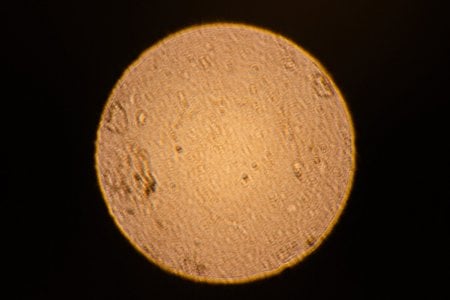
My v1 Sonnar 5cm f/2. I talked about the erosion of the front lens of the first f2 lenses that can be seen even in the bokeh balls.
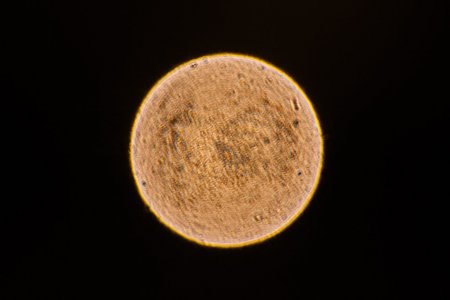
My v4 wartime Sonnar. This one produces a very vintage effect too.
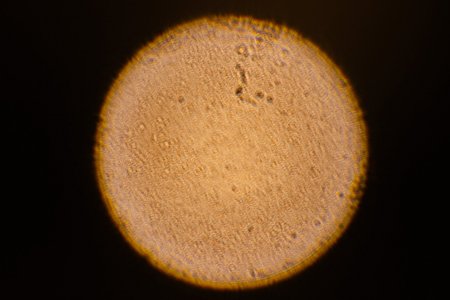
Again one of the Nickel Sonnar 5cm f/2 that looks very bad and I noticed a poor sharpness and contrast before doing this test.
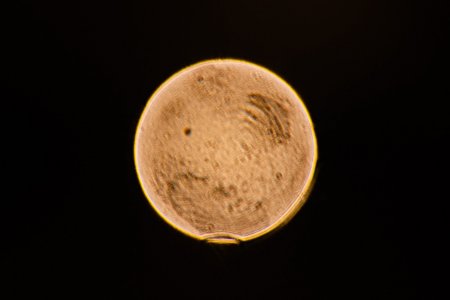
In Comparison my Nickel Sonnar 5cm f/1,5. A little bit soft but not a bad lens.
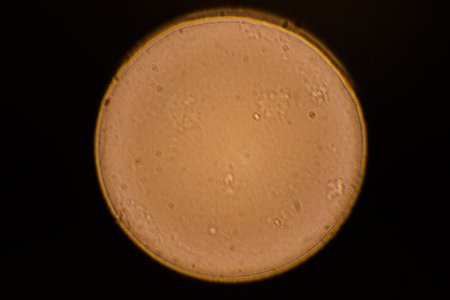
And here one of the sharper wartime Sonnar 5cm f/1,5 T coated lenses.
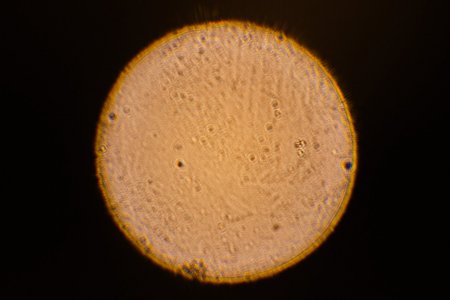
I did my strange flashlight test with all of my Sonnar 5cm f/1,5 and my Nickel Sonnar 5cm f/2. I will spare you the results of all of them. But some best of ones for you.
My Sonnar 5,8cm f/1,5

My v1 Sonnar 5cm f/2. I talked about the erosion of the front lens of the first f2 lenses that can be seen even in the bokeh balls.

My v4 wartime Sonnar. This one produces a very vintage effect too.

Again one of the Nickel Sonnar 5cm f/2 that looks very bad and I noticed a poor sharpness and contrast before doing this test.

In Comparison my Nickel Sonnar 5cm f/1,5. A little bit soft but not a bad lens.

And here one of the sharper wartime Sonnar 5cm f/1,5 T coated lenses.

TenEleven
Well-known
Really nice work @dexdog and yeah that looks certainly a lot like a Zeiss stamped number. Especially considering that the would be fakers certainly would not go through the effort to put it there - especially so when one considers the crudeness of some of the machining on display here.
That RF cam... goodness gracious. I think that's the worst I have seen so far. I wonder if you could get the RF to track by moving the RF cam sleeve forward or back or whether the rangefinder offset comes from the slope itself (also likely)
That RF cam... goodness gracious. I think that's the worst I have seen so far. I wonder if you could get the RF to track by moving the RF cam sleeve forward or back or whether the rangefinder offset comes from the slope itself (also likely)
dexdog
Mentor
TenEleven, I also had the thought that I could experiment with the RF cam. Currently, the way it is set is slightly too short to move the rangefinder arm as far as it needs to go. I also think that the shape of the slope is not near as nicely done as my other one that focuses well. Given how hacked up it is, makes me wonder if someone took a file to it. There were sharp burrs on the edges of it when I got the lens, and I got a small cut on one of my fingers handling it..That RF cam... goodness gracious. I think that's the worst I have seen so far. I wonder if you could get the RF to track by moving the RF cam sleeve forward or back or whether the rangefinder offset comes from the slope itself (also likely)
Last edited:
dexdog
Mentor
Starting to put the lens back together. I could not figure how to get the barrel with the front element off, so have decided to leave it in place given that it works OK. I discovered that someone had tried to shim the rangefinder cam using the shiny aluminum tape (about 3/1000 inch thick) that is used to seal heating ducts. I kept wondering why the cam edge was sticky and had aluminum chunks coming off in tiny peices. I removed about 2 thicknesses of tape, or about 6/1000 total. I cleaned the crud off the cam and it looked better already. I touched it up with a needle file to adjust the slope until it looked more like my other 5.8cm lens with the sloped cam. Original machining still pretty crude, though. Lastly, I moved the rangefinder cam closer to the back of the lens until it looked about right at infinity and close focus.

Discovered some assembly marks on interior of lens mount and back of rangefinder cam. Aligning these marks gets the RF cam sleeve back in the original position.



Discovered some assembly marks on interior of lens mount and back of rangefinder cam. Aligning these marks gets the RF cam sleeve back in the original position.


Last edited:
dexdog
Mentor
The lens mount has 4 starts on the helical threads, only one of which is correct. I can't figure out how to put the original screw and follower back inside the lens mount, so will just tap the existing hole in the mount and use a bigger screw. The black marks on the focus ring indicate minimum focus point where the big screw will hit the edge of the helical. Need a break, will take my dog for a long walk.


Last edited:
dexdog
Mentor
Got the lens back together. I found a screw that I had a tap for, and while it fits the head is a bit too large. Rangefinder cam is still off a little bit; I would have to file the cam down a bit to make the scale agree with the measured distance. In any case, close enough for mirrorless, and close focus and infinity still work. The backward aperture and focus are very strange, though


Last edited:
dexdog
Mentor
Last post, I promise! This old uncoated lens actually performs pretty well. As crude as the barrel construction and machining is, whoever collimated the lens either knew what they were doing or got lucky. First pic is f4, point of focus is the stop sign in the center of the frame at 225 yards/205 meters, Sony a7iii.

Second pic is a center crop of the first pic. Surprisingly sharp IMO. Gray and rainy at my house today, so flare is not an issue.


Second pic is a center crop of the first pic. Surprisingly sharp IMO. Gray and rainy at my house today, so flare is not an issue.

S.H.
Picture taker
Nice work!
Räuber
Established

Zeiss Jena Sonnar 1,5/5cm lens M39 Mount coupled RF | eBay
Bilder / Pics. Keine Selbstabholung.
www.ebay.de
Another Sonnar 5cm f/1.5 from the makers of the Sonnar 5,8cm f/1,5 for a very fair price. I'm tempted to buy this one but hope that one of you guys might be more interested.
Interesting details: MFT of 0.8m and max. aperture of f16.
The serial is fake. This would put it in the pre-war era but it was made after WWII. Would have made more sense to write Carl Zeiss on it rather than Carl Zeiss Jena. You can see the same 6 slot spanner containment ring at the rear end as on the 5,8cm Sonnars. It is the same font too. It is difficult to say if the optics are any good. It should be the optics Bertele calculated during WWII.
S.H.
Picture taker
another one  :
:



Sonnar 5.8cm, 1:1.5 LTM M39 RARE Lens | eBay
I was able to find very little information about this lens online - here is a short quote from a forum The lens has been serviced about a year ago by a trained professional technician. The focusing and aperture rings are smooth, the aperture blades have a little discolouration, but are oil-free.
www.ebay.de

dexdog
Mentor
A lot of these popping up all of a sudden, and not all sellers are asking for 1500 euros! The example S.H. posted looks to be in good condition
I wonder how many were produced- at least in the several hundreds, if not a thousand. Far more than other low-production lenses, such as the Nikkor 5cm F1.5.
Räuber
Established
Maybe about 500 - 600. Still collecting serials but it looks to me that the creators did not role dices on the serials. Every lens got their own serial in the usual order: 1, 2, 3... Highest 1407xxx serial so far: 1407485I wonder how many were produced- at least in the several hundreds, if not a thousand. Far more than other low-production lenses, such as the Nikkor 5cm F1.5.
It looks to me that there are different models and even computations. There are 5,8cm and 6cm models.
Bought this one now.

Zeiss Jena Sonnar 1,5/5cm lens M39 Mount coupled RF | eBay
Bilder / Pics. Keine Selbstabholung.
www.ebay.de
Maybe... maybe... this is not a Sonnar 5cm but 6cm.
dexdog
Mentor
S.H.
Picture taker
Well, I got this one, I shouldn't have but I could not avoid it . Hopefully it is useable on a IIIF.another one:

Sonnar 5.8cm, 1:1.5 LTM M39 RARE Lens | eBay
I was able to find very little information about this lens online - here is a short quote from a forum The lens has been serviced about a year ago by a trained professional technician. The focusing and aperture rings are smooth, the aperture blades have a little discolouration, but are oil-free.www.ebay.de
View attachment 4838198
Räuber
Established
Got the LTM 5cm f/1,5 Sonnar this week and it is indeed a Sonnar 6cm f/1,5. I measured it and answered some of my immediate questions and want to share it with you guys.
First here are some comparison images with my LTM CZJ Sonnar 5cm f/1,5 (left), the LTM Sonnar 5,8cm f/1,5 (middle) and the LTM Sonnar 6cm (engraved 5cm) f/1,5 (right).






You can see that the Sonnar 5,8cm and 6cm are larger than the 5cm. The 6cm is mostly the same size and weight as the 5,8cm. Key differences between the 5,8cm and 6cm are
That out of the way I checked my 5,8cm and 6cm lens if they differ in focal length and I would rate them as equal. The 6cm is a 5,8cm in disguise! I did a rather simple test of MFD and I see that the 6cm focuses closer than my 5,8cm Sonnar. But my CZJ Sonnar 5cm focues closer than this 6cm.
I have to say that I'm lucky with this 6cm Sonnar. It is way sharper than my 5,8cm Sonnar. As I have written before my 5,8cm has some optical issues robing a lot of sharpness. This 6cm looks quite good to me. Still it is not as contrasty and sharp as my LTM Sonnar 5cm but usable sharp.
Difficult to date both 6cm lenses. What do you think, which lens is newer and which is older?
First here are some comparison images with my LTM CZJ Sonnar 5cm f/1,5 (left), the LTM Sonnar 5,8cm f/1,5 (middle) and the LTM Sonnar 6cm (engraved 5cm) f/1,5 (right).






You can see that the Sonnar 5,8cm and 6cm are larger than the 5cm. The 6cm is mostly the same size and weight as the 5,8cm. Key differences between the 5,8cm and 6cm are
- 6cm uses uncoated glass, 5,8cm uses light coated glass
- 6cm focus down to 0.8m, 5,8cm down to 1m
- 6cm filter size 44mm, 5,8cm filter size 40,5mm
- 6cm max f16, 5,8cm max f11
- 6cm uses Carl Zeiss Jena name, 5,8cm uses no brand name
- 6cm uses 2M serials, 5,8cm uses 1407k serials
That out of the way I checked my 5,8cm and 6cm lens if they differ in focal length and I would rate them as equal. The 6cm is a 5,8cm in disguise! I did a rather simple test of MFD and I see that the 6cm focuses closer than my 5,8cm Sonnar. But my CZJ Sonnar 5cm focues closer than this 6cm.
I have to say that I'm lucky with this 6cm Sonnar. It is way sharper than my 5,8cm Sonnar. As I have written before my 5,8cm has some optical issues robing a lot of sharpness. This 6cm looks quite good to me. Still it is not as contrasty and sharp as my LTM Sonnar 5cm but usable sharp.
Difficult to date both 6cm lenses. What do you think, which lens is newer and which is older?
Ernst Dinkla
Well-known
This kind of test where you basically shows grinding defects and similar such issues mercilessly. The same thing happens in the "bokeh balls" if your lens has a particularly large bubble or scratch it can show up there despite not affecting the overall image. Which is, crudely speaking what you do with this test.
However, this mainly tests the lens on-axis and I am not fully convinced that this test actually tests for de-centering. For example if the paint on the lens elements itself has flaked it could cause internal reflections that will look just like that (and will also not go around the entire circumference of the lens). Further, also looking very similar is harsh outlining of bokeh-rings is often caused by the designer choosing to over-correct for spherical aberration (at that distance!!) and not necessarily de-centering.
Which I believe is what you are seeing with your Nikkor. Try it. Use the Nikkor up close near its NFD. No glow!
Because the designers chose to aggressively correct for Spherical aberration at portrait distances. The price for that is paid at longer distances, so now try infinity - lots of glow!
This is not a new discovery by the way, Dante Stella wrote about it here:
One thing we absolutely however do see with this test, which I guess if the "Sturzvisier" theory is correct should not be surprising:
The overall grinding level of finish and consistency of finish has more variance to it. Which makes sense, since the bar for "good enough" for an optical sight is likely lower than that for a camera lens. So you will get (by happenstance) some good samples, perhaps even the odd amazing one, and of course a lot of samples that would have been either parted out or rejected if they had to meet the quality bar for a camera lens.
Ernst Dinkla
Well-known
Marco Cavina's article is quite convincing. I did read it some years ago. With a 6cm 1.5 here I was interested in its history. With more than 5000 if not 10000 dive bombers built and most crashed/destructed all over Europe the source of the Sonnar elements did not have to be in the Zeiss factories ......
Share:
-
This site uses cookies to help personalise content, tailor your experience and to keep you logged in if you register.
By continuing to use this site, you are consenting to our use of cookies.

